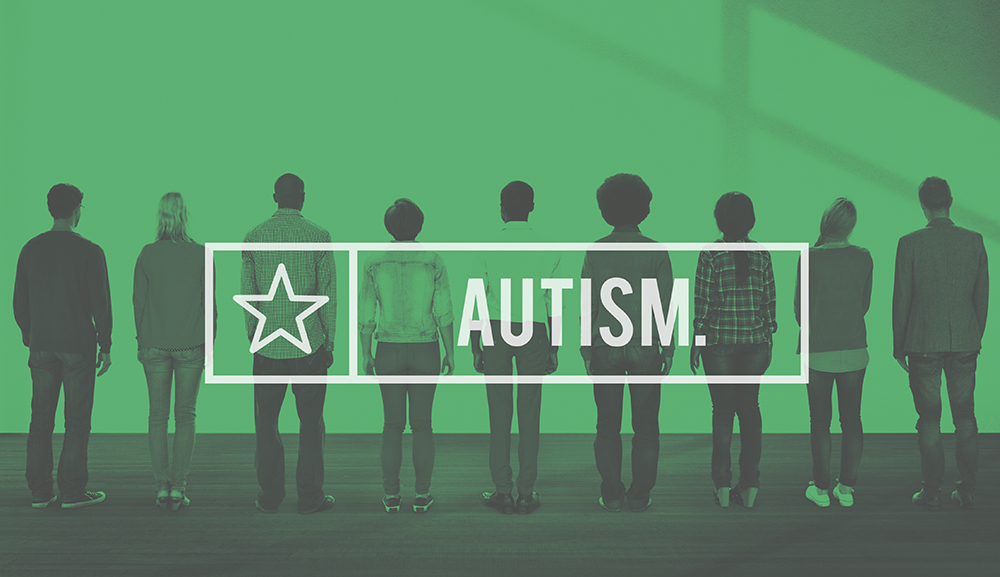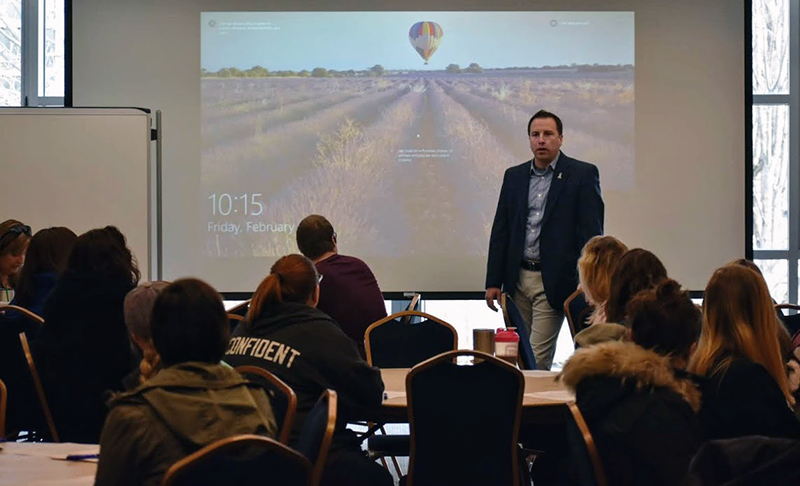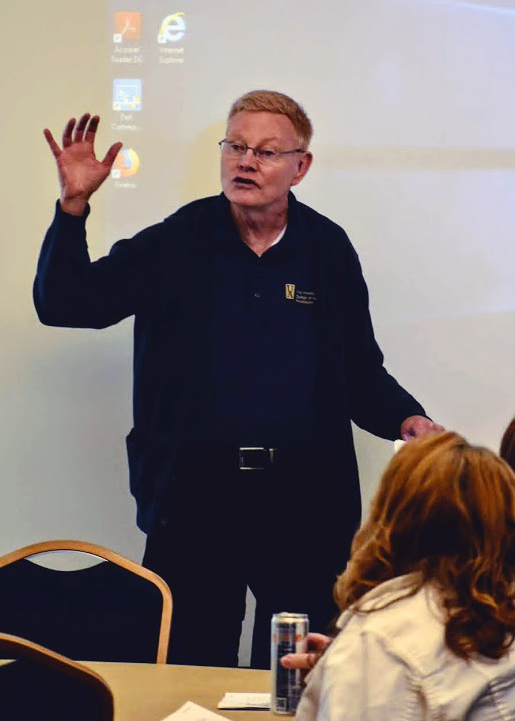Senior Cory Barrett and junior Garrett Fleming are members of The University of Akron Campus Patrol, where every day is different. Barrett plans to apply for the UA Police Academy and Fleming already serves as an auxiliary police officer with the Tallmadge Police Department. Both know firsthand the challenges that come when working with the public. But neither considered that children and adults on the autism spectrum could bring an additional set of challenges to the job.
Barrett and Fleming joined students and community professionals on Feb. 22 in the Jean Hower Taber Student Union for “Stop. Assess. Support. An Introduction to Autism Spectrum Disorders.” The event was sponsored by UA’s College of Health Professions and College of Applied Science and Technology during Five-Star Friday to encourage thinking about what we can do to better work with and support those in our community with autism.
Autism is prevalent in our society
One child in 59 has autism, and the number of adults with autism remains unknown, largely because most were not diagnosed as children. Autism doesn’t discriminate, and its community includes individuals of all races, genders, ethnicities and socioeconomic backgrounds. But, unlike other more “visible” disabilities, symptoms of autism might not be readily recognizable.

Laurie Cramer, executive director of the Autism Society of Greater Akron, explained that autistic individuals need extra patience and compassion from those around them.
“It is important for us to stop, pause, and think before we react to the way a customer, client, or patient is acting,” Cramer cautioned. “Recognizing the symptoms of autism can completely change the outcome of the interaction.”
Cramer explained that Autism Spectrum Disorders are now categorized into three levels — based on the degree of support needed. All levels experience deficits in social interaction (inability to join activities or respond appropriately to social situations); nonverbal communication (poor eye contact, lack of use of gestures or body for expression); and developing, maintaining and understanding relationships (difficulty with sharing, making friends, etc.). The severity of their autism may be expressed by repetitive motor movements, insistence on sameness, unusually fixated interests and under/overreaction to sensory environment in the areas of noise, smell, sound, touch, etc.

Dr. William Lanzinger of Cleveland Clinic leads a discussion for health care providers at “Stop. Assess. Support. An Introduction to Autism Spectrum Disorders.”
Because we will often interact with individuals with autism during both our personal and professional lives, she encouraged the audience to:
- STOP when they recognize a difference (using learned knowledge of the characteristics of autism)
- ASSESS the situation based on the behavioral or environmental occurrences causing the challenges, and
- provide SUPPORT with accommodations/adaptions learned to build rapport and trust.
Focusing on areas of care
Understanding and recognizing the symptoms of autism is the first step in a positive interaction. Attendees had the opportunity to use their knowledge to stop, assess and model ways to support those with autism during breakout sessions specifically designed for first responders, health care professionals, social service agencies and school settings. Each group read a real-life scenario of an interaction between professionals and those with autism. Groups then determined how the situation appeared to the professional and the biases they carry, how it appeared to the individual with autism, and how they, as professionals, can recognize symptoms of autism and provide better support.
First responders
Garrett and Fleming quickly learned that stressful situations can make interactions between police and those with autism extra difficult. During the training, the two learned how loud sirens and flashing lights might increase the level of anxiety of a person with autism, and that knowing some of the behaviors of autistic individuals can better help them assess the situation. For example, a person with autism might cover his ears to shield himself from the noise.
“This training was helpful by teaching me some of the signs to look for,” said Garrett. “This will help me to better realize when someone might be on the spectrum and help me to address the situation differently that I might otherwise have. I can approach the person in a different way that might help me to get the situation under control quicker.”
School personnel

Dr. Mark McManus, visiting assistant professor of social work, leads sessions on autism for first responders and school personnel.
Colleges and high schools are experiencing an increased number of students with autism. Heather Rose, disability specialist and service coordinator for the Office of Accessibility at UA, discussed the need for school personnel to learn all they can about the background of the student with autism who enrolls at their institution.
“As providers we must look at their previous support system to give them the best support we can while they are on our campus,” said Rose. “Once a student with autism enrolls in college, parents are not there to take care of them, therefore students need to be taught how to be self-advocates by speaking up about issues they are having and seeking help from the appropriate places. We can and should assist them as they take on this new role.”
Health Care
Dr. William Lanzinger is a physician at Cleveland Clinic Akron General, but is also the father of a son who was diagnosed with autism. He feels his experience as a parent has made him a better physician.
Lanzinger stressed the importance of training all members of staff – including office staff, nurses and doctors – to ensure that individuals with autism understand the importance of making accommodations. As part of the scenario, he explained to the group how the patient’s behavior can be confusing to providers and may be interpreted as rude or uncooperative.
“Little things, like making the appointment as predictable as possible, or allowing a patient to write down information rather than talk about it, can go a long way to making the patient feel less anxious.” he said.
Social Services
Parents seeking help for their autistic child may need the most support of all, especially in the case of young children who are in the process of being diagnosed. Most are frightened, overwhelmed, and don’t often know where to turn for help.
“The family needs support – not just the child,” reminded Cramer. “Educate the parents as much as you can, give them all the resources you can find and provide as much reassurance as possible.”
Everyone can make a difference
Dr. Mark McManus, visiting assistant professor of social work at UA reminded attendees that autism is a part of everyday society.
“In all of these scenarios, the key is to help the person with autism … to talk to them, ask questions and do what you can to improve the outcome,” McManus shared. “I hope scenarios like this have helped to bring to light the everyday life of people dealing with autism and how we can do better as a community in providing services and building understanding”
For more information on autism or autism training, visit Autisim Society of Greater Akron.
Media contact: Cristine Boyd, 330-972-6476 or cboyd @uakron.edu.
